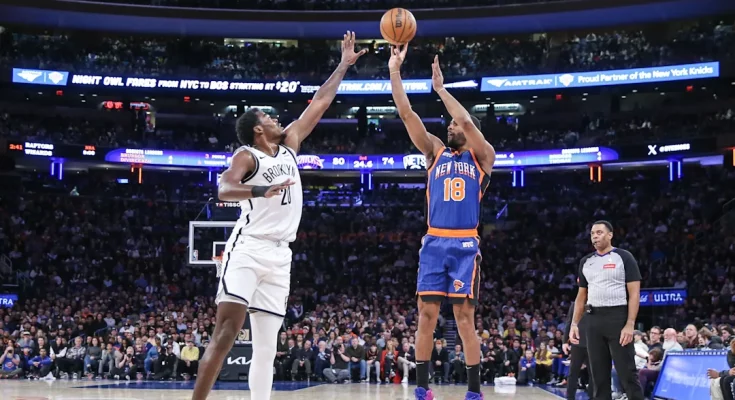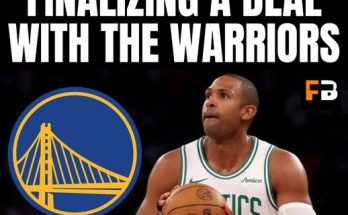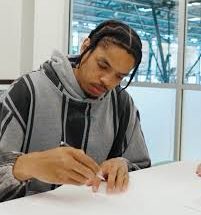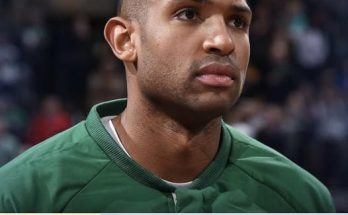The buzz around Madison Square Garden is electric, a low hum of anticipation that grows louder with each passing day. The New York Knicks, a franchise steeped in history and yearning for a return to consistent contention, find themselves at a fascinating crossroads. After a season that saw them reach the Eastern Conference Finals, a significant stride for a team that has endured its share of lean years, the focus now shifts to the meticulous art of roster construction. The acquisition of key pieces like Mikal Bridges and Karl-Anthony Towns, alongside the continued stellar play of Jalen Brunson, has solidified a formidable core. Yet, as any seasoned NBA observer knows, a championship contender is built not just on stars, but on the complementary pieces that elevate the collective. This offseason, a particularly intriguing narrative has begun to emerge from within the whispers of the league: the strong likelihood of the Knicks bringing back their incumbent shooting guard. This isn’t just about filling a roster spot; it’s a strategic move laden with implications for offensive flow, defensive cohesion, locker room chemistry, and ultimately, the team’s championship aspirations.
To understand why this move is being so heavily predicted, we first need to dissect the modern role of the shooting guard in the NBA. Gone are the days when the “two-guard” was simply a high-volume scorer, often a ball-dominant iso-player. While pure scoring remains a critical component, the contemporary shooting guard is a chameleon, adapting to the dynamic needs of a pace-and-space offense. They are often asked to be a “3-and-D” specialist, capable of knocking down perimeter shots at a high clip while simultaneously guarding multiple positions on the defensive end. They need to be proficient off-ball movers, understanding spacing and timing to exploit defensive rotations. Moreover, with the increasing prevalence of “combo guards,” many shooting guards are also tasked with secondary playmaking duties, relieving pressure from the primary ball-handler and initiating offense. The ability to attack closeouts, finish at the rim, and draw fouls adds further layers to their offensive utility. Defensively, they must possess the quickness to stay in front of shifty guards and the strength to body up against larger wings. In essence, the modern shooting guard is a versatile, high-IQ player who contributes across the statistical spectrum, often providing the crucial connective tissue that links a team’s star power.
The Knicks’ current roster, even with its established stars, possesses a delicate balance. Jalen Brunson, undeniably the engine of the offense, thrives with space to operate and capable shooters around him. Mikal Bridges offers elite perimeter defense and increasingly reliable scoring. Karl-Anthony Towns provides a unique offensive hub from the center position. The question then becomes, how does a shooting guard fit into this intricate puzzle, and more specifically, what kind of shooting guard best complements these existing strengths? The answer lies in a player who understands their role, doesn’t demand excessive touches, can consistently convert open looks, and perhaps most importantly, offers defensive tenacity and versatility. This is where the incumbent shooting guard becomes so appealing, as their skillset appears to align perfectly with these requirements.
When we talk about the prediction of bringing back a shooting guard, we’re not just discussing a single player in isolation. We’re examining a broader philosophy that the Knicks front office, under President Leon Rose, has meticulously cultivated. Rose’s tenure has been marked by a deliberate, calculated approach to team building, moving away from the impulsive, star-chasing tendencies of past regimes. The success of acquiring players with strong existing relationships, be it through college connections (Brunson, Bridges from Villanova) or previous agency ties (Brunson, Towns from CAA), highlights a belief in chemistry and familiarity as foundational elements. This isn’t to say they won’t make “hard choices,” as evidenced by the recent coaching change, but rather that a strategic, long-term vision underpins their decisions. Bringing back a known quantity, a player who has already integrated into the team’s culture and understands the system, fits squarely within this philosophy. It minimizes the risks associated with introducing a new personality or a player who might require a significant adjustment period.
The financial landscape of the NBA also plays a monumental role in these decisions. The new Collective Bargaining Agreement (CBA) has ushered in an era of heightened financial scrutiny, particularly for teams operating above the luxury tax and nearing the “second apron.” These punitive measures restrict a team’s ability to make splashy moves, use certain exceptions, and even trade for specific players if they consistently operate in the highest tax brackets. The Knicks, having invested heavily in their core, are undoubtedly navigating these financial complexities. Re-signing an existing player, especially one whose Bird Rights they hold, offers significant advantages. Bird Rights allow teams to exceed the salary cap to re-sign their own free agents, providing a crucial mechanism for continuity. This flexibility is invaluable in a cap-strapped environment. Therefore, bringing back a shooting guard who is already part of the team, and whose contract fits within their long-term financial planning, becomes a highly logical and fiscally responsible move. It allows them to maintain their competitive window without crippling their future flexibility.
Beyond the strategic and financial considerations, there’s the undeniable human element of team building. A locker room is a delicate ecosystem, and chemistry can be as impactful as raw talent. The Knicks’ recent success has been attributed, in no small part, to the strong bonds within the team, a testament to the character and camaraderie of the players. Bringing back a player who is already a trusted and respected member of this group reinforces that positive environment. They understand the nuances of playing alongside Brunson, the defensive demands placed on them, and the overall ethos of the coaching staff (even with a new head coach in Mike Brown, continuity in personnel can ease the transition). This familiarity translates into seamless on-court execution, effective communication, and a shared understanding of roles and responsibilities. A new player, no matter how talented, requires time to integrate, to build trust, and to learn the unspoken rhythms of a winning team. In a league where every possession, every quarter, every game matters, minimizing these adjustment periods can be the difference between a deep playoff run and an early exit.
The player development aspect also cannot be overstated. The Knicks have shown a commitment to nurturing talent, and while they have made significant trades for established stars, they also value the organic growth of their roster. An incumbent shooting guard, especially one who has shown incremental improvements over their tenure, represents a return on investment in player development. The coaching staff has a deep understanding of their strengths and weaknesses, allowing them to tailor development plans and offensive/defensive schemes that maximize their impact. This continuous improvement, even in veteran players, is a hallmark of successful organizations. It’s about optimizing what you have, not just constantly seeking new, unproven commodities.
Looking at the specific skillset required, the Knicks need a shooting guard who can contribute efficiently without being a primary initiator. They have Jalen Brunson for that. What they truly need is someone who can hit open three-pointers, punishing defenses that collapse on Brunson’s drives or Towns’ post-ups. They need someone who can competently guard opposing backcourt players, taking some of the defensive burden off Brunson and allowing Bridges to focus on the opposing team’s primary wing threat. They need someone who understands the flow of the offense, knowing when to cut, when to space, and when to make the extra pass. This isn’t about finding the next superstar; it’s about finding the perfect cog in a finely tuned machine. The predicted re-signing of the shooting guard suggests that the front office believes this player embodies these precise qualities, perhaps even more so than any available free agent or trade target.
The market for shooting guards in the 2025 offseason, while offering some intriguing names, also presents challenges. Many top-tier guards will command maximum or near-maximum contracts, potentially pushing the Knicks further into luxury tax territory and limiting their flexibility. Role players who fit the “3-and-D” mold are always in high demand and can be overpaid in a competitive market. Furthermore, integrating a new player requires a period of adjustment, both on and off the court. The chemistry that the Knicks have painstakingly built could be disrupted, even if subtly, by the introduction of an unfamiliar element. By choosing to bring back their current shooting guard, the Knicks are opting for stability, familiarity, and a proven fit within their existing framework. It’s a calculated decision that prioritizes continuity and internal growth over the perceived greener pastures of the free agency market.
Consider the potential alternatives. If the Knicks were to let their current shooting guard walk, they would be left with a significant hole to fill. The free agency market for shooting guards is a mixed bag, with some potential high-upside players but also many who come with significant question marks regarding fit, injury history, or consistency. Trading for a shooting guard would involve giving up valuable assets, such as draft picks or promising young players, which the Knicks have carefully accumulated. Both scenarios carry inherent risks and potentially set back the progress made. The decision to bring back the incumbent is a testament to the belief that they are the best option, not just for their individual talents, but for their seamless integration into the team’s overarching strategy.
Ultimately, the prediction that the Knicks will bring back their shooting guard is more than just a rumor; it’s a reflection of a well-defined organizational philosophy. It speaks to a front office that values continuity, understands the intricate dance of the salary cap, and prioritizes locker room cohesion. It highlights a recognition of the modern shooting guard’s multifaceted role and the specific needs of a roster built around Jalen Brunson’s brilliance. In a league increasingly defined by player movement and blockbuster trades, the Knicks’ anticipated move signals a commitment to cultivating and maintaining the winning formula they have diligently constructed. It’s a quiet confidence in what they already have, and a strategic gamble that the best path forward lies in strengthening the bonds and building upon the foundation that has already proven successful. The echoes of past Knicks teams, sometimes characterized by chaotic decisions, are fading. In their place, a new era of measured, intelligent team building is emerging, and the re-signing of their shooting guard will be another key piece in that evolving narrative. This isn’t just about one player; it’s about the continued ascent of a franchise determined to bring a championship back to the Mecca of Basketball.



